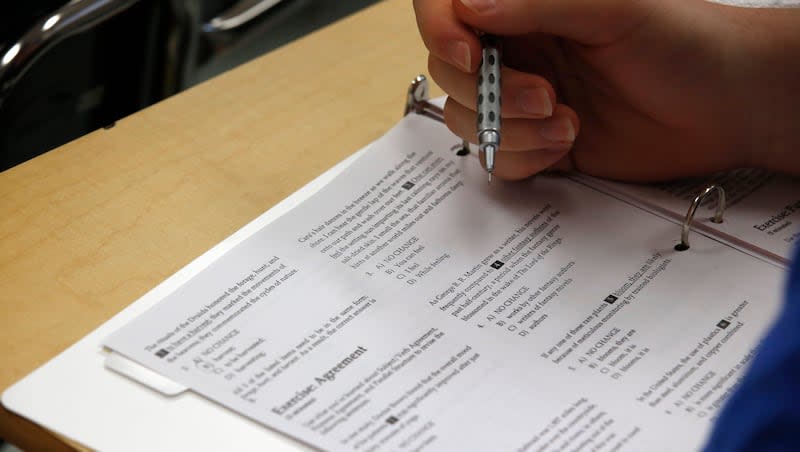Put down those pencils: The SAT is moving completely digital

Students across the U.S. will be taking the SAT college admission exam completely digitally for the first time, starting on March 9.
According to CNN, prospective students will soon answer their tests through proctored computers, laptops and other electronic devices, rather than by the traditional method of filling in bubble answers with pencils. The exam is reportedly an hour shorter, now with more time to spend on each question.
In addition, the math and reading sections will be separated into two parts, with the second section becoming less or more difficult depending on the test-taker’s performance of the first.
The examinees will continue to be scored on the 1,600-point scale, receiving their scores within days instead of weeks, CNN reports.
Why is the SAT moving to digital?
The exam changes, according to the Deseret News, were announced two years ago by the College Board — the organization which develops and administers the college exam — in an effort to retool the test and reportedly make it more fair and less stressful to test-takers.
Additionally, some schools have made the SAT or ACT — an alternative college exam — optional to submit during college admissions. It’s been a recent trend allegedly caused by the COVID-19 pandemic, as testing centers and schools were closed during this time, per CNN.
An example: FairTest reported that over 2,000 four-year universities and colleges didn’t require ACT/SAT scores from fall 2024 applicants.
Priscilla Rodriguez, vice president of the College Readiness Assessments at the College Board, shared to The Associated Press in 2022 that the digital version will be “easier to take” and “easier to give.”
Rodriguez said, “We’re not simply putting the current SAT on a digital platform. We’re taking full advantage of what delivering an assessment digitally makes possible,” per AP.
Has the digital SAT exam been administered yet?
CNN reported that a trial version of the digital SAT was tested in the fall of 2021. Continuing on, international examinees last spring began using the digital version to take the SAT, while test-takers of the PSAT — a shorter version of the SAT used as practice or as a scholarship opportunity — took the exam digitally last fall.
“The digital version, I thought, was a lot less stressful than the paper and pencil version.” said high-schooler Natalia Cossio, who took the PSAT both on paper and digitally, reported AP.
How many students take the SAT? Is it currently required for some schools?
Per the College Board, less than 2 million students in the 2023 high school class took the college exam at least once, reportedly up from 1.7 million the previous year. Although the test is offered over weekends, 67% of 2023 SAT takers took it on a school day, as opposed to 63% from the 2022 class and 62% from the 2021 class, respectively.
Despite the trend of some schools not requiring scores, a small amount of selective colleges and universities, such as Dartmouth and Brown, have made announcements to bring back ACT/SAT requirements, stated ABC News.
AP added that school requirements for exam scores allow them to “identify promising students who might otherwise be overlooked.” And some students see the benefit in taking the college exams — even if they’re not required.
“A lot of people are going test-optional now but if you do put your scores in, you most likely will have an advantage,” said high schooler Rachel Morrow, per AP.

